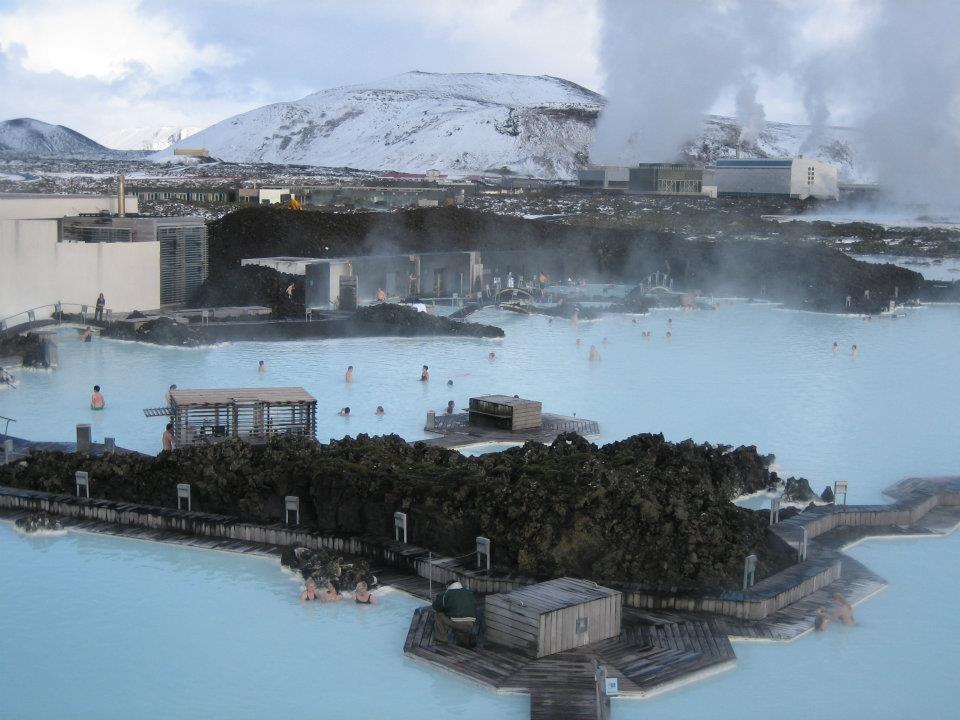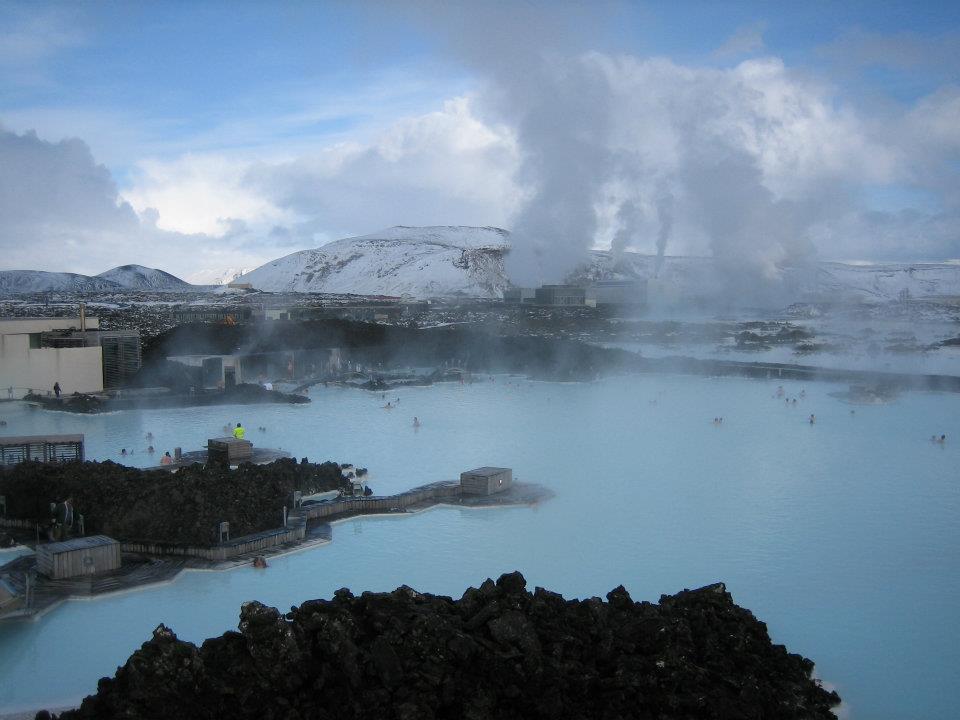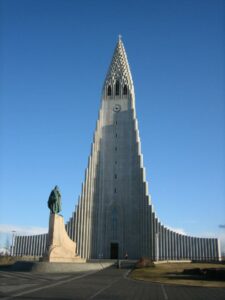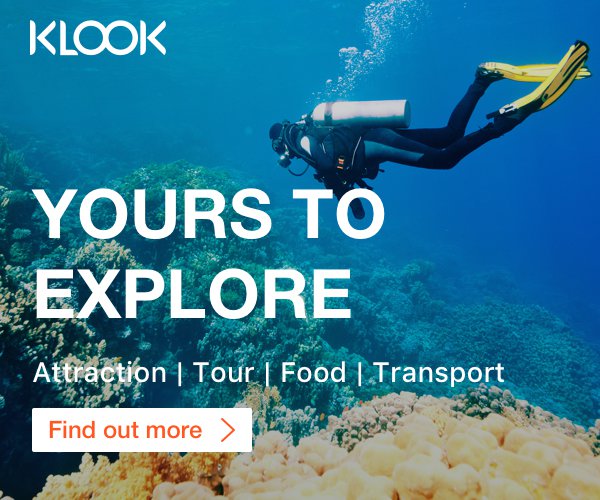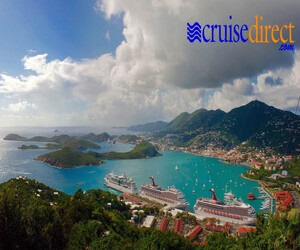Anyone who travels to Iceland will undoubtedly have a once-in-a-lifetime experience that will leave a lasting impression. The nation is renowned for its breath taking natural beauty, which includes glaciers, volcanoes, geysers, and waterfalls throughout its landscapes.
The Blue Lagoon, a geothermal bath situated on a lava field close to Reykjavik, is one of Iceland’s most well-known attractions. While taking in the breath taking surroundings, guests can relax in the warm, mineral-rich waters.
The Northern Lights, a seasonal display of natural light, are another of Iceland’s most well-known attractions. Tourists who take a tour can see this breath taking natural phenomenon, which is brought on by the interplay of the solar wind and the earth’s magnetic field.
Iceland’s breath taking glaciers, which may be visited on an exhilarating snowmobile excursion or on a guided glacier hike, are another feature of the country. The nation also has a number of hiking trails, like the well-known Laugavegur Trail, that take tourists through stunning scenery.
Additionally, tourists can savour delectable Icelandic fare, which includes regional specialties like lamb, seafood, and skyr, a type of yoghurt.
Overall, travelling to Iceland is a singular and amazing experience that has something to offer for everyone. In this article, we will discuss what to do and see in Iceland when you visit this beautiful country.
Visit the Blue Lagoon
World-famous geothermal spa The Blue Lagoon is situated in a lava area not far from Reykjavik, Iceland. The lagoon’s milky-blue waters are heated by geothermal energy and are teeming with minerals, making it a favorite spot for people looking to unwind and rejuvenate.
Warm waters in the Blue Lagoon, which are considered to provide therapeutic benefits for the skin and body, are available for visitors to enjoy. The lagoon also provides a range of spa services, such as body wraps, facials, and massages.
The Blue Lagoon’s surroundings are extremely stunning, with mountains and lava fields in the distance and steam rising from the lake. Visitors have two options for seeing the neighborhood on foot or with a tour guide.
The Blue Lagoon is home to a number of eateries and cafes that serve delectable Icelandic food, including fresh seafood and customary specialties like lamb and skyr.
Overall, a trip to the Blue Lagoon is a singular and unforgettable experience that provides rest and renewal as well as breath taking natural beauty. Anyone visiting Iceland should make sure to go there.
If you would like to book a tour to see the Blue Lagoon, click here or on the Get Your Guide banner image below from one of our preferred suppliers.
Visit Reykjavik
The capital and largest city of Iceland is Reykjavik, which is a favorite travel destination for visitors. The city is renowned for its distinctive fusion of new, old, with vibrant old structures, and contemporary architecture.
The National Museum of Iceland, the Reykjavik Art Museum, and the recognizable Hallgrimskirkja church are just a few of the numerous museums, art galleries, and cultural landmarks that visitors to Reykjavik can explore. The city is renowned for having a vibrant nightlife with a wide selection of pubs, clubs, and eateries.
Walking through the city centre of Reykjavik and taking in the vibrant architecture, street art, and sculptures is one of the pleasures of the trip. In order to understand more about the history and culture of the city, visitors can also join a guided walking tour.
Many tour companies offer excursions to nearby attractions like the Blue Lagoon, the Golden Circle, and the Northern Lights, making Reykjavik an excellent base for exploring the surrounding countryside.
Overall, Reykjavik is a must-see for anyone visiting Iceland because it offers a distinctive fusion of natural beauty, culture, and history.
Visit the Golden Circle
About 300 km long and home to several of Iceland’s most well-known sights, the Golden Circle is a well-liked tourist route. The trip usually takes a day and starts and ends in Reykjavik.
Thingvellir National Park, the Gullfoss waterfall, and the Geysir geothermal area make up the Golden Circle’s three primary stops. The Strokkur geyser, which sprays water up to 30 metres in the air every few minutes, can be seen erupting near Geysir.
One of Iceland’s most stunning waterfalls is Gullfoss, which cascades water 32 metres into a small canyon. The first Icelandic parliament was founded in Thingvellir National Park, a UNESCO World Heritage site, in 930 AD.
The Kerid volcanic crater lake, the Faxi waterfall, and the Secret Lagoon, a geothermal hot spring, are among of the additional sights along the Golden Circle road.
Anyone travelling to Iceland should make sure to visit the Golden Circle, which provides a glimpse into the country’s distinctive geology and natural beauty.
Enjoy the Northern Lights
The Aurora Borealis, sometimes referred to as the Northern Lights, is a common natural occurrence in the world’s arctic regions. From September to April, clear, dark nights in Iceland offer the best chances to see the Northern Lights.
The collision of charged particles from the sun with atoms in the Earth’s atmosphere, which results in the Northern Lights, produces a vibrant show of light. Green, pink, purple, blue, and many other hues can be seen in the lights.
Going outside and away from light pollution is the best way to see the Northern Lights in Iceland. Numerous tour companies provide guided Northern Lights tours that take tourists to the best viewing locations and educate them on the mythology and science behind the phenomenon.
Anyone visiting Iceland during the right time of year must experience the Northern Lights, a breath taking and unforgettable natural wonder. The lights, however, are a natural occurrence, so it’s crucial to keep in mind that they can’t always be counted on to show up on any particular night.
If you would like to read our article on the best places to see the Northern Lights, click here go to our post where you will receive the best information and our recommendations.
Visit the Vatnajökull National Park
The enormous Vatnajökull glacier, which covers much of the park’s surface, inspired the name of this large wilderness area in southeast Iceland. With more than 13% of Iceland’s total land area under its care, the park is the biggest in the country.
Numerous natural marvels, such as tall glaciers, vast glacial lagoons, and active volcanoes, can be found in the park. The Skaftafell glacier and Jökulsárlón glacier, two of Iceland’s most recognisable sights, are located in the park.
The many hiking paths in Vatnajökull National Park can be explored as well as activities like glacier hiking, ice caving, snowmobiling, and more. As the park is home to reindeer, Arctic foxes, and numerous bird species, it is also a well-liked destination for wildlife enthusiasts.
Vatnajökull National Park is a must-see location for anybody visiting Iceland since it provides a singular and unforgettable view of the nation’s breath taking natural splendor.
If you would like to book a tour to see the Vatnajökull National Park, click here or on the Viator banner image below from one of our preferred suppliers.
Visiting Akureyri
The second-largest urban area in Iceland after Reykjavik is Akureyri, a charming town in the country’s north. Akureyri, also referred to, as the “Capital of the North,” is a thriving economic and cultural hub with a fascinating past and breathe taking natural surroundings.
The Akureyri Church, a magnificent landmark with a distinctive design that overlooks the town from a hilltop, is one of the most well-known sights in Akureyri. The town also has a number of top-notch museums, such as the Museum of Akureyri and the Akureyri Art Museum, which offer intriguing insights into the area’s history and culture.
Due to the numerous ski resorts that are situated in the nearby mountains, Akureyri is a well-liked place to go skiing and snowboarding in the winter. Visitors can go hiking, fishing, and whale watching in the neighboring fjords throughout the summer.
Overall, Akureyri is a must-see location for anybody visiting Iceland since it provides a distinctive fusion of history, culture, and breath taking natural beauty.
Visit the Westfjords
In Iceland’s northwest corner is the isolated and untamed region known as the Westfjords. Visitors can get an unmatched sense of the country’s natural splendor in this sparsely populated region with its distinctive and wild terrain.
Numerous magnificent fjords, imposing mountains, and charming fishing villages can be found in the area. Seabirds, seals, and whales are frequently sighted in the waters along the Westfjords’ magnificent coastline, making it a haven for wildlife.
The Dynjandi waterfall, a stunning waterfall that rushes down the side of a mountain in a series of seven smaller falls, is one of the primary attractions in the Westfjords. Hiking, fishing, and animal viewing are some of the other well-liked local pastimes.
Even though getting to the Westfjords may be more difficult than getting to other parts of Iceland, it is well worth the effort for those looking to truly capture the natural beauty of the place.
If you would like to book a tour to see the Dynjandi Waterfall, click here or on the Klook banner image below from one of our preferred suppliers.
The South Coast in Iceland
One of Iceland’s most visited areas is the South Coast, which is known for its spectacular scenery, magnificent waterfalls, and black sand beaches. The area is easily reachable by vehicle or tour bus and runs from Reykjavik to the town of Vik.
The South Coast is home to some must-see sights, like as the stunning waterfalls Seljalandsfoss and Skogafoss, both of which make for fantastic photo ops. The Reynisfjara black sand beach, with its remarkable basalt columns and spectacular sea stacks, is also located in this area.
Since there are many museums and historic sites in the South Coast, it is a great place to visit if you’re interested in Icelandic history and culture. While the nearby Solheimajokull glacier offers the chance to explore an otherworldly landscape of ice and snow, the Skogar Folk Museum offers an intriguing look into Iceland’s rural history.
Overall, the South Coast is an essential stop for everyone visiting Iceland since it provides a singular and remarkable view of the nation’s natural beauty and cultural heritage.
The Snaefellsnes Peninsula
West Iceland’s Snaefellsnes Peninsula is a wild and picturesque area distinguished by its glaciers, volcanic peaks, and breath taking coastal vistas. The peninsula is a well-liked location for day visits or longer excursions and is easily reachable from Reykjavik.
The Snaefellsjokull glacier, which is one of Iceland’s most mysterious locations and is situated atop a dormant volcano, is one of the attractions of the Snaefellsnes Peninsula. Arnarstapi and Hellnar are two picturesque fishing villages in the vicinity that provide a look of Iceland’s traditional way of life.
Because the Snaefellsnes Peninsula is home to a large variety of bird species and marine life, visitors can also enjoy hiking, whale watching, and birdwatching there.
The Snaefellsnes Peninsula is a must-see location for anybody visiting Iceland since it provides a singular and spectacular view of the nation’s natural beauty and cultural legacy.
If you would like to book a tour to see the Snaefellsnes Peninsula, click here and select from one of our preferred suppliers.
Festivals in Iceland
Festivals in Iceland give tourists a one-of-a-kind and unforgettable experience by highlighting the nation’s colorful culture, music, and arts. The annual Iceland Airwaves Music Festival, which takes place in Reykjavik, is among the most well-known events. It takes place in a number of venues all across the city and boasts a varied roster of regional and international musicians across several genres.
The Reykjavik Arts Festival, which honours theatre, dance, music, and visual arts, is another noteworthy event. The festival features performances and exhibitions at several locations throughout Reykjavik, displaying both regional and international talent.
The Thjóhát Festival on the Westman Islands is a must-attend event for everyone with an interest in Icelandic mythology and customs. It is a fun festival that mixes camping, bonfires, music, and customary celebrations from Iceland.
Iceland also hosts the Reykjavik Pride Parade, the Secret Solstice Music Festival, and the Winter Lights Festival, which presents breath-taking light works and cultural activities.
Through opportunities to celebrate, interact, and fully immerse oneself in the vivid spirit of Iceland, these events offer a look into the rich artistic and cultural environment of Iceland.
If you would like to book or buy a ticket to a festival or event in Iceland, click here or on the Ticketmaster image below to select from one of our preferred suppliers.




